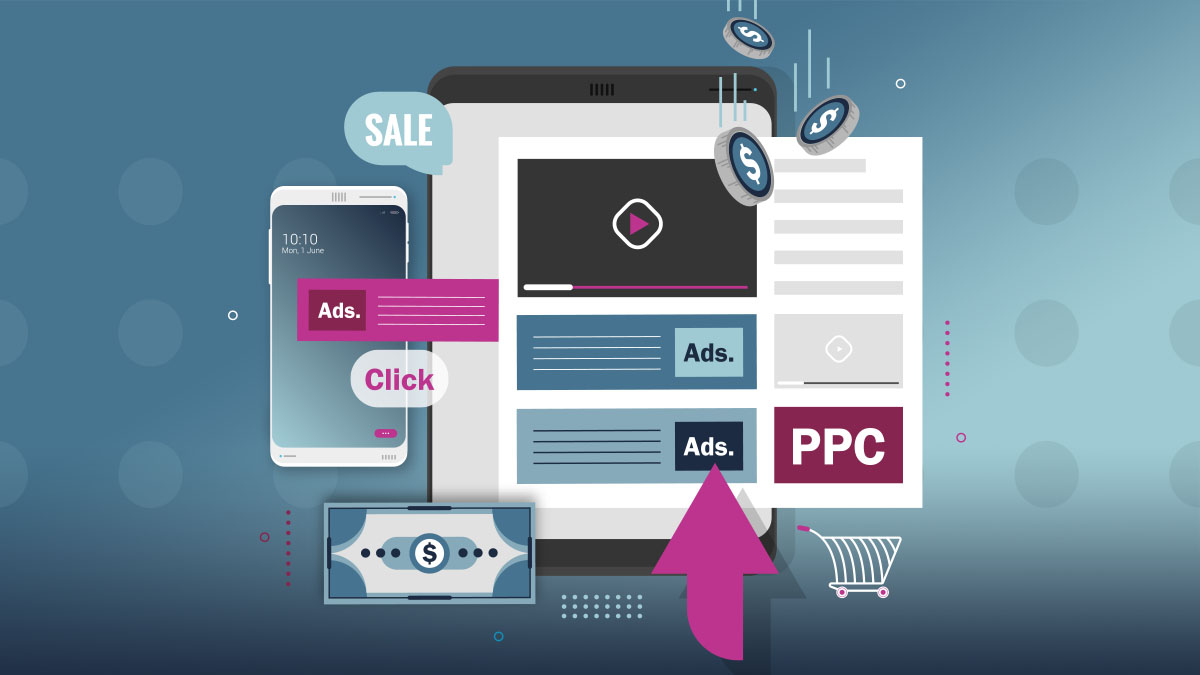A lot has been discussed about attribution modeling and the upcoming sunsetting of Universal Analytics (UA), but there has not been much discussion about how the shift in default attribution from UA to Google Analytics 4 (GA4) may impact the allocation of your paid media budget.
There are multiple touchpoints along the path to purchase, and the customer journey continues to evolve over time, especially with the shift in online consumer behavior. The real challenge is understanding HOW your customers interact with your brand before they convert and why does this matter? When you create a media plan, you typically want to allocate your budget to the channels with the highest return on investment (ROI). But, since there are different attribution models, you might not be getting the full picture of your advertising efforts.
UA’s Last Click Attribution
Let’s say your customer does a Google search, clicks on your ad, browses your website and leaves before making a purchase. Then two days later, that customer is retargeted with a Facebook ad, goes to your site, and makes a purchase. With UA’s default attribution model, last click, all the credit for the conversion would go to Facebook. But this isn’t really an accurate representation of the impact of your ad because it’s not factoring in that initial paid search touchpoint.
Using last click or single touchpoint attribution modeling does not paint the full picture of cross-channel performance because you are focused on the channel delivered the highest ROI. You can’t deduce that because one channel garnered 30% of your conversions, that you should allocate 30% of your media budget to that channel. In addition to considering what impact that channel had on your bottom line, you also need to understand, at what cost? Meaning, how much are you spending to earn that conversion?
GA4’s Cross-Channel Data-Driven Attribution
GA4 helps to bridge the gap of all the touchpoints in the customer journey to better understand the impact of your paid media channels. By default, GA4 uses a cross-channel data-driven model. So instead of assigning all the credit to the last channel clicked before conversion (UA’s default attribution model), Google will assign credit to each channel that a user interacts with on their path to purchase. The credit for each channel is weighted using machine learning to determine the probability of conversion of each touchpoint in a customer’s journey to purchase.
For example, you may see that one channel is assigned a 0.37 conversion and another channel is assigned a 0.63 conversion. This means that both channels were a touchpoint in the path to purchase, but the channel assigned, the 0.63 conversion, was more important in the journey than the channel assigned 0.37. Without this touchpoint the user was less likely to convert. This method gives you a better idea of how all your paid media channels are performing and clarifies how your customers interact with your brand before making a purchase.
Switching from UA to GA4
It’s important to be informed on how both models work as you make the switch from UA to GA4. You will begin to see differences in the performance of your paid media channels between the two platforms. You may have previously used UA to view conversions and revenue from your paid media channels to set your paid media budgets, but with UA’s last click default attribution model, other touchpoints in the journey are lost. This could lead to discrediting some media channels that could be an integral part of the customer journey.
For example, in UA you might see that paid search is driving most of your conversions, and you are seeing a low number of conversions through paid social. You may be tempted to invest more in paid search and decrease your budget on Facebook or Instagram. However, when using GA4 you may find that paid social was commonly a touchpoint in the path to purchase. So, instead of cutting the budget for paid social, you may decide to invest more in prospecting campaigns to drive more upper funnel traffic.
Conclusion
Using the attribution modeling comparison tool available in both UA and GA4, you can compare how the different models weigh the performance of your media channels. This tool compares conversions and revenue across the various attribution models—first interaction, last interaction, linear, time decay, position based, etc.—and will show you the difference in performance of each channel.
Instead of evaluating each channel solely on its own, you need to take a more holistic approach and look at how your customers are engaging with your ads along the path to purchase. The attribution model you use will determine how to allocate your media budget across different channels. Selecting which attribution model is right for your company depends on your business objectives and can change as your business evolves.
